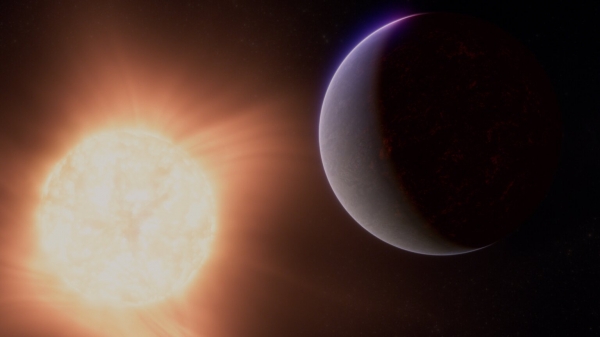Researchers using NASA’s James Webb Space Telescope may have detected atmospheric gases surrounding 55 Cancri e, a hot rocky exoplanet 41 light-years from Earth.
Researchers using NASA’s James Webb Space Telescope may have detected atmospheric gases surrounding 55 Cancri e, a hot rocky exoplanet 41 light-years from Earth. This is the best evidence to date for the existence of any rocky planet atmosphere outside our solar system.
Renyu Hu from NASA’s Jet Propulsion Laboratory (JPL) in Pasadena, California, is lead author on a paper published today in Nature. “Webb is pushing the frontiers of exoplanet characterization to rocky planets,” Hu said. “It is truly enabling a new type of science.”
Super-Hot Super-Earth 55 Cancri e
55 Cancri e (image below, details/download), also known as Janssen, is one of five known planets orbiting the Sun-like star 55 Cancri, in the constellation Cancer. With a diameter nearly twice that of Earth and density slightly greater, the planet is classified as a super-Earth: larger than Earth, smaller than Neptune, and likely similar in composition to the rocky planets in our solar system.
Read more at NASA/Goddard Space Flight Center
Image: This artist's concept shows what the exoplanet 55 Cancri e could look like based on observations from NASA’s James Webb Space Telescope and other observatories. Observations from Webb’s NIRCam and MIRI suggest that the planet may be surrounded by an atmosphere rich in carbon dioxide (CO2) or carbon monoxide (CO). Researchers think the gases that make up the atmosphere could have bubbled out of an ocean of magma that is thought to cover the planet’s surface. (Credit: NASA, ESA, CSA, Ralf Crawford (STScI))




